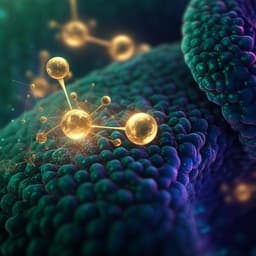
Biology
Upregulated hepatic lipogenesis from dietary sugars in response to low palmitate feeding supplies brain palmitate
M. E. Smith, C. T. Chen, et al.
This groundbreaking research by Mackenzie E. Smith and colleagues reveals how brain palmitic acid (PAM) is generated during development in mice, uncovering the role of de novo lipogenesis from dietary sugars in maintaining brain PAM levels, especially under low dietary PAM conditions. Interestingly, maternal behavior and pup development remained unaffected by dietary PAM variations.
Playback language: English
Related Publications
Explore these studies to deepen your understanding of the subject.







